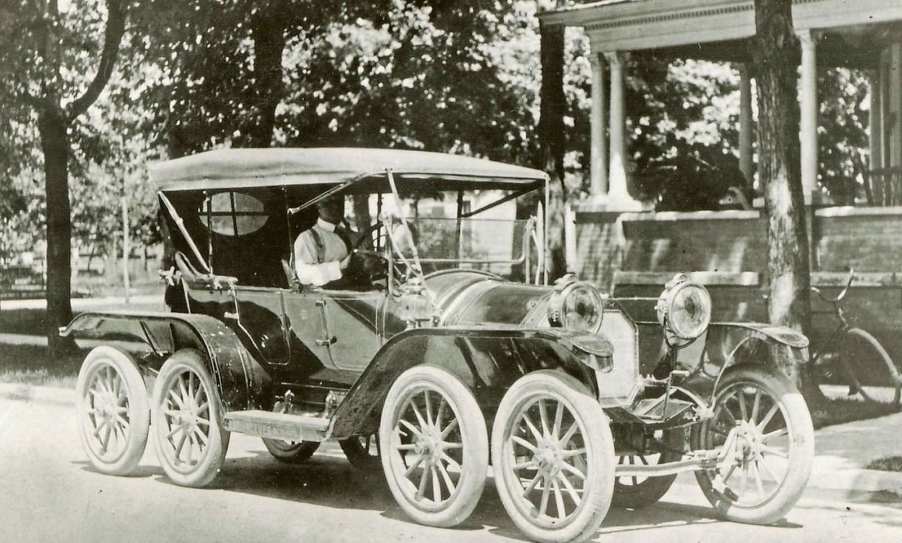
Move over 6×6 G-Wagon, here comes the 8-wheeled Octoauto…from 1911
Back in 2013, Mercedes-AMG decided that four wheels was a number only suitable for peasants. In pursuit of better and smoother off-roading–and the wallets of overpriced hypertruck buyers–it introduced the G 63 AMG 6×6. This “sport utility truck” is 19.25 feet long and sits on three portal axles borrowed from the Unimog. But if more wheels are always better, the G-Class 6×6 should bow down to the 1911 Reeves-Overland Octoauto, an eight-wheeled beast far ahead of its time.
By 1911, inventor Milton Reeves had patented a variable speed transmission (first used at sawmills and later in cars) and an engine so well engineered that many other automakers were buying them from him. He’d even introduced the first double-muffler exhaust. So he turned his attention to the next big engineering problem horseless carriages faced. Suspension.
Back then roads were horrendous. And to make matters worse, tires technology was basic and shock absorbers were nonexistent. Automobile passengers were at the mercy of every bump and jounce of their vehicle’s primitive leaf springs.
Reeves realized that another industry had already solved this problem: passenger railroads. At each end of a train car is a four-wheel “bogie.” It can articulate in every direction, allowing each wheel to move independently. Reeves decided they were so brilliant, he would build a car that rode on two of them.
The Octoauto was an extravagant eight-wheel convertible. It was 20 feet long and featured Reeves top-of-the-line engine making 20 horsepower. Both its front axles could steer. And–get this–its rearmost axle could counter-steer. That’s some Cybertruck tech! All accounts say it had an exceptionally smooth ride for the day.
The rest of the segment was nowhere near Reeves. He advertised the Octoauto as “the only easy riding car in the world.” And no other automaker disagreed.
The automobile’s Achilles heel was “going.” And stopping. Its only driven axle was the only non-steering axle (the forward-rear axle). Mechanically, I can see why that was the best Reeves could do. The first factory 4WD truck was still over 30 years away. But I feel like he could have added some more brakes. That forward-rear axle was also the only one with brake drums.
Still, Reeve’s Octoauto hit all the performance benchmarks of the day. Innovations such as Reeves’ putting the inlet and exhaust on opposite sides of the engine head and leveraging splash lubrication helped set it above other powerplants.
Barely any Octoautos sold and none survive today. Why the flop? Perhaps the $3,200 price tag. That would be $100,000 today. Cheap by the standards of today’s Mercedes-AMG trucks, but I’m sure the uber-wealthy folks of 1911 preferred to buy their own trains instead.



